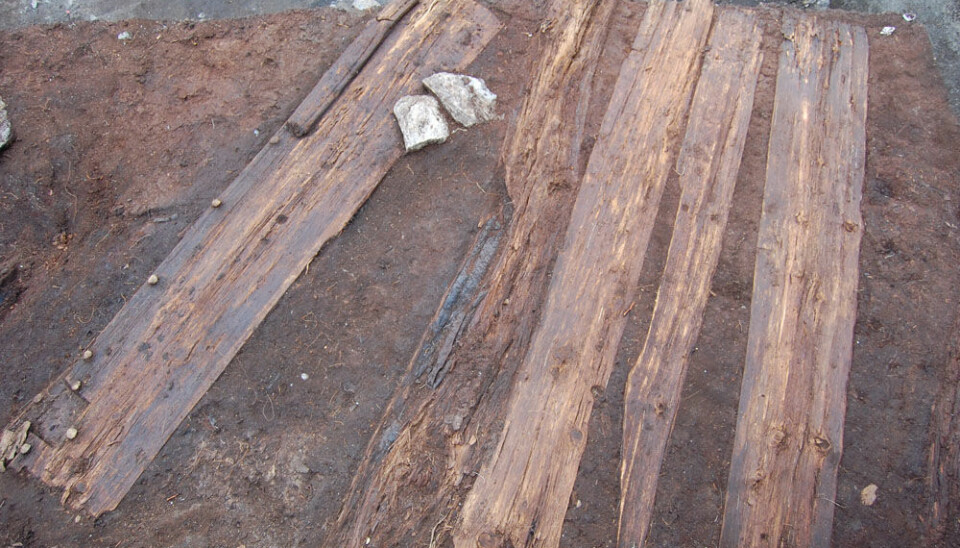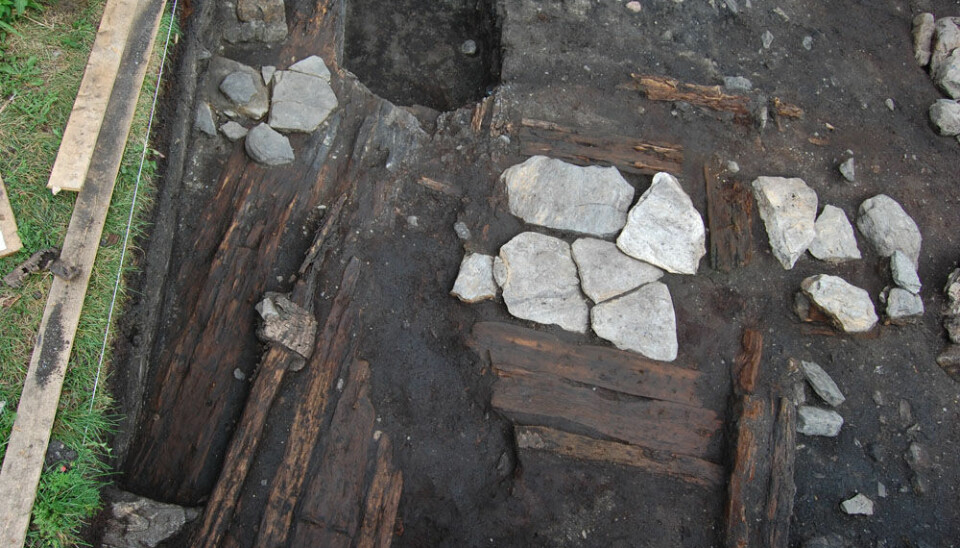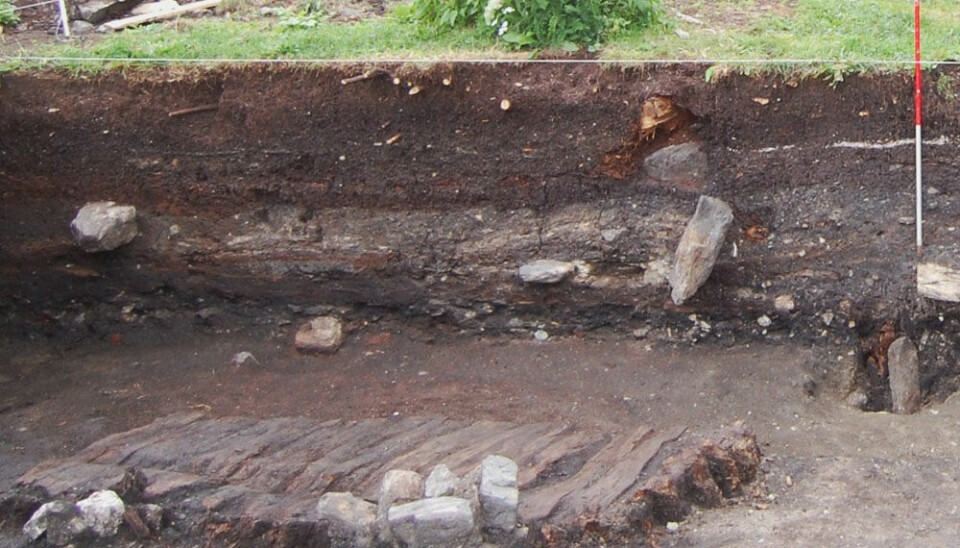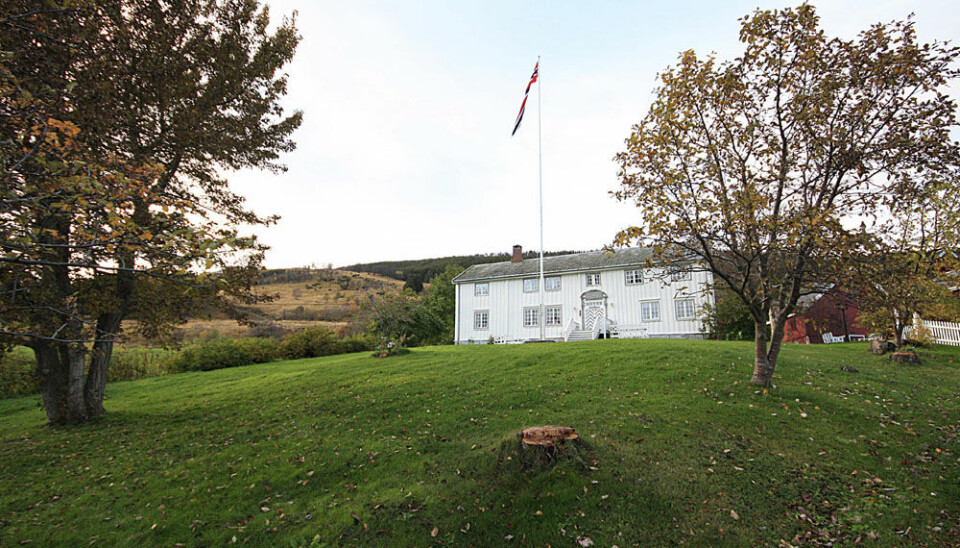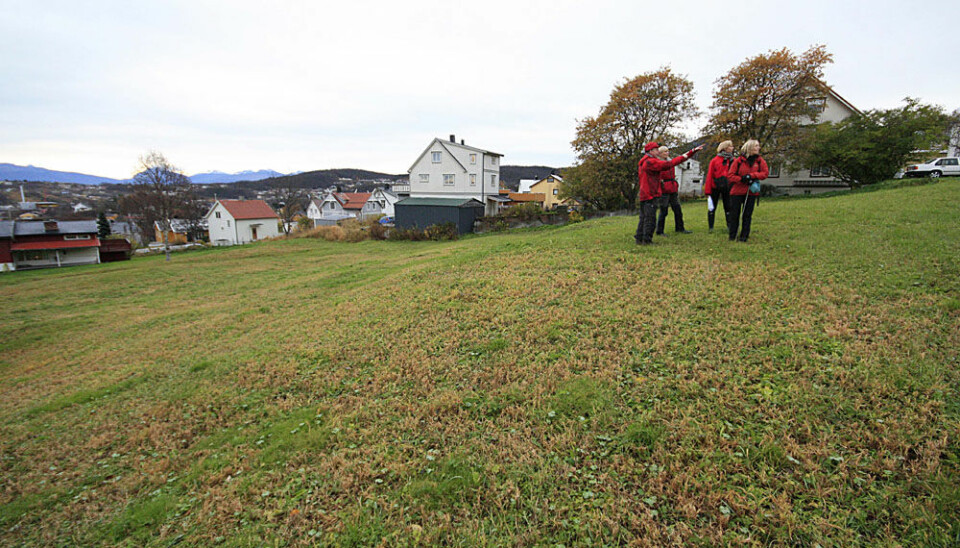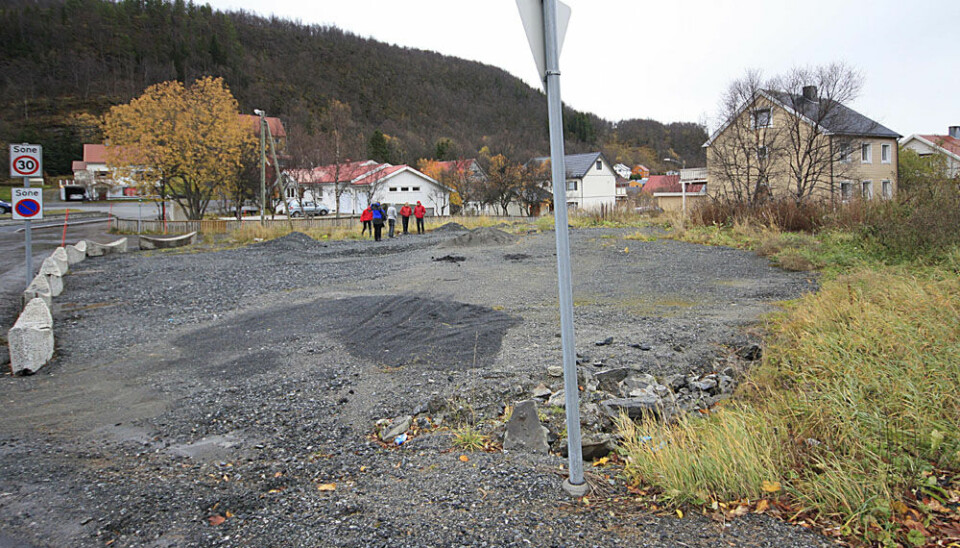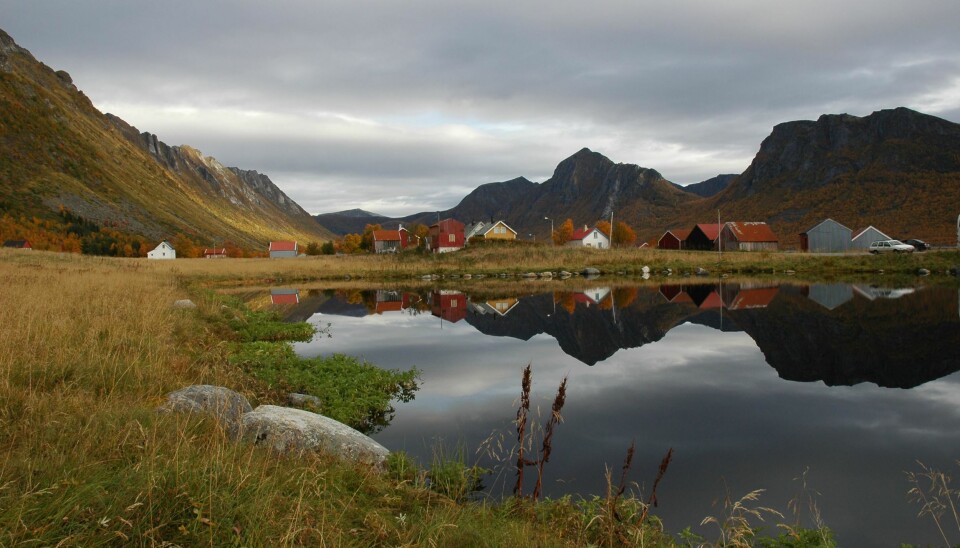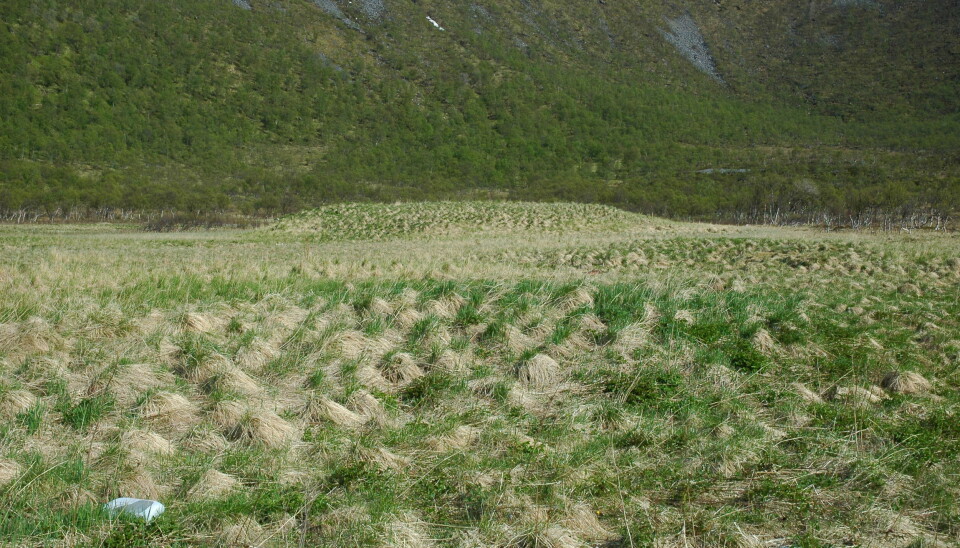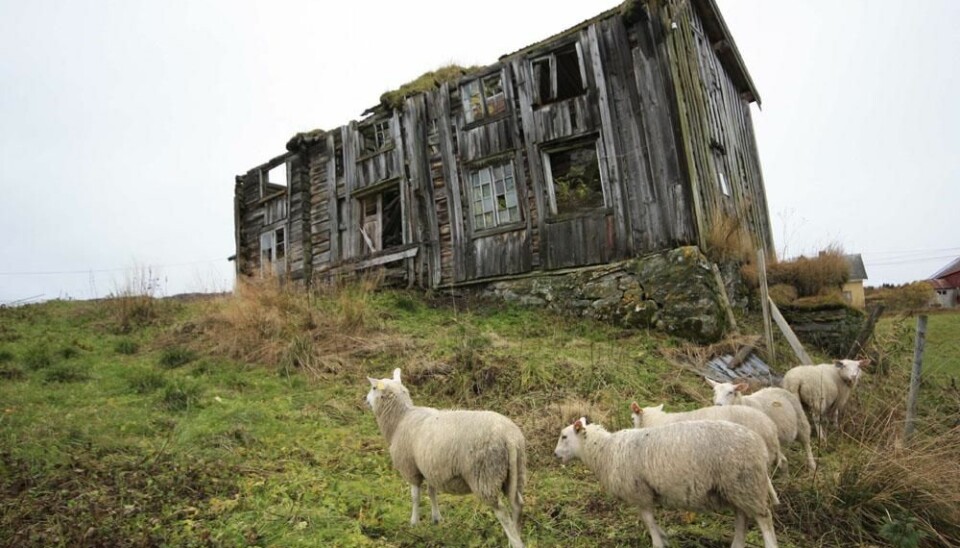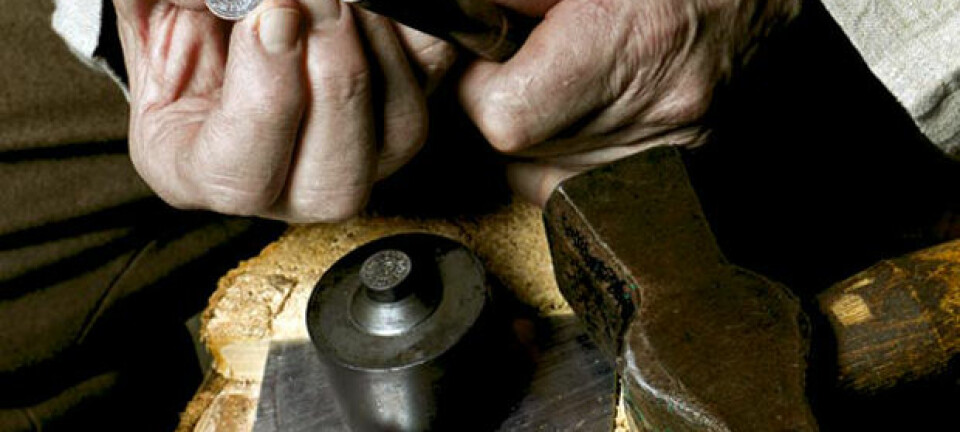
Treasures in farm mounds
In North Norwegian farm mounds archaeologists unearth layer upon layer, revealing activities going back to the days of the Vikings. These are now threatened by construction and a warmer climate.
Denne artikkelen er over ti år gammel og kan inneholde utdatert informasjon.
A property owner plans to build a new garage. But the mound his home is on is historically protected, so archaeologists are on their way.
They remove the sod where the garage will be erected. A few centimetres beneath the grass they find planks from an 18th century boat. These had been recycled when the house was built a century later. They keep digging.
Further down they come across some logs and remains of an even older house – up to a thousand years old.
But the archaeologists keep going. They dig further into the farm mound and uncover more – remnants of a Viking Age smithy. They bring up fragments of tools, blacksmithing slag and the foundations of a forge.
The property owner got his garage and the archaeologists from the Norwegian Institute of Cultural Heritage Research (NIKU) and Tromsø University Museum gained more knowledge about North Norwegian history.
“Our intentions aren’t to halt the workings of a farm or to squelch building projects. People live their lives on these farms and want their garages or annexes,” says Knut Paasche, the head of NIKU’s Archaeology Department.
Houses atop houses
Farm mounds are a North Norwegian phenomenon. Further south, farmlands tended to be more spacious or the terrain less rugged, providing more options for locating farm buildings. In the North tillable land is scarce and often there is only one logical spot for the main farmhouse.
So North Norwegians rebuilt houses and other buildings on the same sites time and again. Along with remains of sod walls, manure and other waste, this accumulated into farm mounds.
A farm mound can be regarded as an archaeological bank in the form of historical and cultural layers upon layers, formed by a thousand years of settlement of a farmyard. Some of these mounds are now deserted, while others are on inhabited properties.
“We don’t have any exact counts on farm mounds but more than 1,000 are registered in public archives,” says Paasche.
Cold climate helps, development is detrimental
“The frigid climate of the North allows the artefacts and material from the farm mounds to be especially well preserved,” explains Paasche.
But he admits that it’s subject to decay during the summer season and the archaeologists fear they’re getting a warmer climate. If they see an increase of four degrees the farm mounds will be at risk.
In addition to rising mean temperatures, aeration and building projects are the biggest threats for the farm mounds.
When the layers are uncovered by excavation or construction they get exposed to oxygen and bio-organic activity increases.
“Then we can lose vital information about Norwegian coastal history, whether these are Sami or Norse settlements,” says Paasche.
Monitoring for preservation
A new research project has started, which aims to preserve farm mounds as well as possible.
“Farm mounds hide exciting cultural treasures. So we have to be good heritage keepers,” says Paasche.
The project uses a method of cultural layer monitoring, which is a fairly new field in archaeology.
When the organic mass decomposes, the layers of cultural relics are compressed and it gets harder to determine what the archaeologists are finding.
The project doesn’t aim to remove objects or remains, as in traditional excavations. The mounds are charted in what is referred to as an in situ (on the spot) preservation.
Archaeologist from NIKU, Bioforsk, Troms County, the Tromsø University Museum and several other institutions will register, measure, dig into and document the mounds. Their objective is to procure an overview which gives authorities and museums the basis for administering these cultural sites.
“A salient question is how to combine the preservation of these mounds with people’s everyday lives and needs,” says Paasche. “Gaining more information is highly relevant here.”
A farm mound can contain archaeological cultural layers several metres thick. But what are the preservation conditions down there?
That’s an issue that Paasche and his colleagues are currently looking into.
------------------------------------------------
Read this article in Norwegian at forskning.no
Translated by: Glenn Ostling







